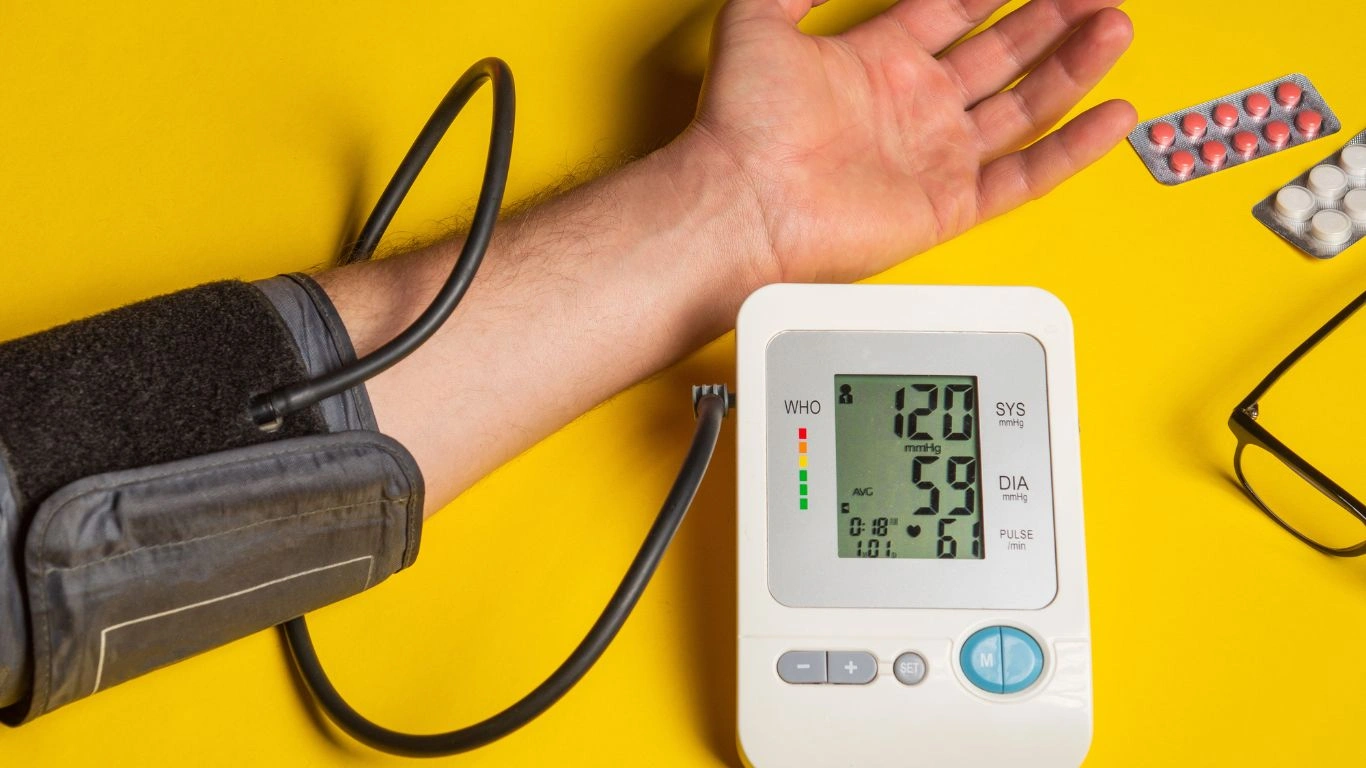How Green Tea Affects Blood Pressure Naturally for Better Health
As someone who’s spent years helping people manage and prevent high blood pressure, I’ve seen firsthand how lifestyle changes can make a world of difference. A simple, yet powerful beverage that often gets overlooked in discussions about hypertension is green tea. I’m sure you’ve heard that it’s packed with antioxidants, but did you know that green tea can also play a role in managing your blood pressure? Let’s dive into how green tea affects blood pressure, and how adding it to your daily routine might benefit you—especially if you’re struggling with hypertension.
What Makes Green Tea Special for Blood Pressure?
Green tea has been studied extensively for its health benefits, and one of the areas where it shows promising results is in managing blood pressure. It contains powerful compounds, including catechins and polyphenols, which have antioxidant and anti-inflammatory properties. These compounds help improve blood vessel function and can assist in lowering blood pressure over time.

In my experience as a hypertension expert, I’ve noticed that many of my patients see improvements after incorporating green tea into their diet. Whether it’s the caffeine content or the unique compounds within green tea, there seems to be something special about it when it comes to managing blood pressure. But let’s break this down a bit further. How does green tea exactly work its magic on your blood pressure?
The Role of Catechins in Green Tea
The catechins in green tea, particularly epigallocatechin gallate (EGCG), are the heroes when it comes to blood pressure control. These natural antioxidants help by dilating blood vessels, improving blood flow, and reducing the strain on your heart. Some studies have shown that regularly drinking green tea can reduce both systolic and diastolic blood pressure levels, which is great news for anyone trying to manage hypertension.
- Improves blood vessel function: Catechins help relax blood vessels, making it easier for blood to flow.
- Reduces oxidative stress: By neutralizing free radicals, green tea can reduce inflammation in your blood vessels.
- Supports heart health: Lowering blood pressure puts less strain on your heart, reducing the risk of heart disease.
Does Green Tea Lower Blood Pressure Right Away?
While green tea can certainly help lower blood pressure, it’s not a quick-fix solution. If you’re looking for instant results, you might be disappointed. But, here’s the thing: just like any other healthy habit, consistency is key. Over time, as you incorporate green tea into your daily routine, you might start to notice gradual changes in your blood pressure readings. In my practice, I recommend to my patients that they try drinking a cup or two of green tea daily and monitor how their body responds.
The Impact of Caffeine on Blood Pressure
Now, let’s talk about caffeine. Green tea does contain caffeine, though in smaller amounts compared to coffee. If you’ve got high blood pressure, you might wonder how caffeine affects your readings. In some people, caffeine can cause a temporary spike in blood pressure. However, research suggests that regular consumption of green tea doesn’t cause significant long-term spikes in blood pressure. So, unless you’re highly sensitive to caffeine, green tea should still be a great option for you.

As someone who has worked closely with hypertension patients for years, I’ve found that many of them can tolerate green tea quite well. But, if you’re worried about caffeine sensitivity, there are decaffeinated green tea options available that can still offer the same health benefits without the risk of raising your blood pressure.
Other Health Benefits of Green Tea for Hypertension
Aside from its blood pressure-lowering effects, green tea comes with a whole host of other health benefits that can complement your hypertension management plan. For example, green tea is known for its anti-inflammatory properties, which can be incredibly helpful in reducing overall body stress. And let’s not forget its ability to help with weight loss—another important factor in managing high blood pressure. Weight reduction can directly influence blood pressure levels, and drinking green tea might just help you on your weight management journey as well.
Green Tea and Weight Loss: A Beneficial Combo for Hypertension
Research indicates that the catechins in green tea can help increase metabolism and fat oxidation. So, by drinking green tea regularly, you may support your body in burning fat more effectively. This, in turn, can help with weight loss or weight maintenance, which is crucial for those of us trying to keep blood pressure within a healthy range.
- Boosts metabolism: Catechins in green tea can help increase calorie burn.
- Supports fat loss: The combination of antioxidants and caffeine can aid in burning fat.
- Helps maintain healthy weight: Managing weight helps lower the strain on your heart and blood vessels.
What the Research Says About Green Tea and Blood Pressure
You might be wondering, “Is there actual research supporting all this talk about green tea’s impact on blood pressure?” The answer is yes! Numerous studies have shown positive effects of green tea on blood pressure regulation. A meta-analysis published in the American Journal of Clinical Nutrition found that drinking green tea regularly led to significant reductions in both systolic and diastolic blood pressure. This is great news for those looking to naturally support their heart health!

Incorporating green tea into your daily routine isn’t just a trend—it’s a scientifically backed strategy that may help you manage your blood pressure over time. But as with any lifestyle change, it’s always best to speak with your healthcare provider before adding something new to your routine, especially if you’re already on medication for hypertension.
How Much Green Tea Should You Drink for Blood Pressure Benefits?
Okay, now that you know why green tea can be a game-changer for managing blood pressure, you might be wondering: “How much should I drink to get the benefits?” Well, based on my experience with hypertension patients, there’s no one-size-fits-all answer. However, most studies suggest that drinking around 2 to 3 cups of green tea a day is a good place to start. This seems to be the sweet spot where you can get the maximum benefit without overdoing it.
Now, I always tell my patients to listen to their bodies. If you’ve never tried green tea before, start with one cup a day and gradually increase it to see how you feel. It’s important to keep in mind that green tea does contain caffeine (even though it’s less than coffee), so if you’re sensitive to caffeine, you may want to adjust the amount you drink or try decaffeinated green tea.

Can You Overdo It with Green Tea?
As much as green tea is packed with health benefits, it’s important to keep in mind that anything in excess can have downsides. Drinking too much green tea can lead to potential issues due to its caffeine and antioxidant content. In my practice, I’ve seen a few patients complain about feeling jittery or anxious when they consumed more than four cups a day. While this is rare, it’s always a good idea to stick to moderation.
Additionally, some studies suggest that drinking excessive amounts of green tea (more than 5-6 cups a day) can interfere with iron absorption in the body. This could potentially lead to deficiencies if you’re not getting enough iron from other dietary sources. But don’t worry, sticking to 2-3 cups a day will allow you to enjoy the benefits without running into these issues.
Green Tea vs. Other Teas: Which Is Best for Hypertension?
There are so many types of tea out there—black, white, oolong, and herbal—and you might be wondering: How does green tea compare to all these other options when it comes to blood pressure? Let me break it down for you based on my own experience and the research I’ve come across over the years.
Green Tea vs. Black Tea
Black tea comes from the same plant as green tea, but the difference is in the processing. Black tea undergoes a longer fermentation process, which means it contains more caffeine and fewer antioxidants than green tea. While black tea also has some health benefits, research suggests that green tea is more effective in lowering blood pressure due to its higher levels of catechins and polyphenols.
That being said, if you prefer black tea and it’s working for you, by all means, keep drinking it! But, if you’re specifically targeting blood pressure reduction, green tea is the better option. In fact, in my experience with patients, I’ve found that green tea tends to be the top recommendation when we’re focused on heart health and hypertension management.
Herbal Teas: A Good Alternative?
If you’re not a fan of green tea or simply want to mix things up, herbal teas can also be a great alternative for managing blood pressure. While they don’t provide the same powerful antioxidants as green tea, certain herbal teas—like hibiscus and chamomile—have been shown to have blood pressure-lowering effects.
- Hibiscus tea: Studies have shown that hibiscus tea can lower both systolic and diastolic blood pressure, making it a great option for hypertensive individuals.
- Chamomile tea: While it’s more known for its calming effects, chamomile tea can also help reduce stress and may indirectly contribute to lower blood pressure.
- Lavender tea: Known for its soothing properties, lavender tea can help with relaxation, and stress reduction, and potentially lower blood pressure over time.
What to Pair with Green Tea for Better Blood Pressure Control
Now that we know green tea can be a powerful tool in managing blood pressure, let’s talk about how you can optimize the effects by pairing it with other lifestyle changes and foods. The key to managing hypertension is creating a holistic approach, and green tea is just one piece of the puzzle.
Healthy Diet and Green Tea: A Winning Combo
As much as green tea is beneficial, it’s not a miracle drink that will single-handedly solve all blood pressure problems. To truly see results, it’s important to combine green tea with a heart-healthy diet—one that’s rich in fruits, vegetables, whole grains, lean proteins, and healthy fats. I always tell my patients to focus on foods that are high in potassium and magnesium, as these nutrients help regulate blood pressure. Think leafy greens, bananas, beans, and avocados.

Exercise and Green Tea: A Heart-Healthy Duo
We all know that regular exercise is key for maintaining a healthy heart and blood vessels, but when you combine it with the benefits of green tea, you’re in for a win. Studies have shown that exercise can enhance the blood pressure-lowering effects of green tea. The combination of increased physical activity and antioxidant-rich green tea can help improve circulation, reduce inflammation, and keep your blood pressure in check.
In my experience, patients who incorporate both exercise and green tea into their daily routine often see the most significant improvements in their blood pressure levels. It doesn’t have to be intense exercise either; even something as simple as a brisk walk or yoga can make a huge difference!
Potential Side Effects and Considerations
While green tea is generally safe for most people, it’s important to be aware of potential side effects. As I mentioned earlier, if you’re sensitive to caffeine, you may experience mild jitteriness or trouble sleeping, especially if you drink it later in the day. Additionally, drinking too much green tea can lead to digestive issues or nausea in some people, so moderation is key.
If you’re on medication for high blood pressure, it’s always a good idea to consult with your healthcare provider before significantly increasing your green tea intake. While green tea is generally safe, it can interact with certain medications, including blood thinners, so it’s always better to be cautious.
Case Studies & Real-Life Examples
As a hypertension expert, I’ve had the privilege of working with countless individuals trying to manage their blood pressure. One thing I’ve learned over the years is that everyone’s body responds differently to lifestyle changes like adding green tea to their routine. But let me share a couple of real-life stories that highlight how green tea can make a meaningful difference in blood pressure control.
Case Study 1: Sarah’s Story
Sarah, a 48-year-old woman, came to see me with a history of mild hypertension. She was looking for natural ways to help manage her blood pressure, as she wasn’t too keen on increasing her medication dosage. After discussing lifestyle changes, I recommended she try incorporating two cups of green tea into her daily routine. We also worked on improving her diet and adding a bit more exercise into her day.
After about six weeks of drinking green tea consistently, Sarah came back for a check-up, and to her surprise (and mine too!), her blood pressure had dropped significantly—about 10 points on both her systolic and diastolic readings. She had also lost a few pounds, which likely helped with the overall improvement. Sarah mentioned she felt more energetic and calmer, attributing some of that to the green tea’s effects. It was a great example of how green tea, combined with healthy lifestyle changes, can have a significant impact on blood pressure management.
Case Study 2: John’s Experience
John, a 60-year-old man, had struggled with high blood pressure for many years. He had tried various medications, but they made him feel sluggish and fatigued, so he was looking for alternative solutions. We discussed green tea as a potential option and recommended he start drinking one cup in the morning and one in the afternoon. Along with this, we worked on stress management techniques and focused on reducing his sodium intake.
After three months, John came in for a follow-up appointment. His blood pressure had dropped by about 12 points, and he felt more alert throughout the day. He said he enjoyed the ritual of drinking green tea, and it became a calming moment in his busy day. This was another great success story showing how green tea, when combined with other lifestyle changes, can support long-term blood pressure control.
Key Takeaways: What You Need to Remember
Before I wrap things up, let’s summarize the key points you need to keep in mind when it comes to using green tea for blood pressure management:
- Green tea can be a powerful ally in managing blood pressure: It’s rich in antioxidants, particularly catechins, which help improve blood vessel function and reduce blood pressure over time.
- Moderation is key: Drinking 2-3 cups of green tea a day is typically enough to reap the benefits without overdoing it.
- Consistency is important: Don’t expect instant results. Regularly consuming green tea as part of a healthy lifestyle will lead to the best outcomes over time.
- Pair green tea with other healthy habits: A balanced diet, regular exercise, and stress management are essential components for effectively lowering blood pressure.
- Consult with your healthcare provider: Always check with your doctor before making any significant changes to your routine, especially if you are on medication for hypertension.
FAQs
Let’s address some of the most common questions I get from patients and people I speak to about using green tea for blood pressure:
1. How long does it take for green tea to lower blood pressure?
It varies from person to person, but you might start seeing some improvements after about 2-3 weeks of regular consumption. Full benefits can take a bit longer, so be patient and consistent.
2. Can I drink green tea if I’m on blood pressure medication?
Yes, most people can safely drink green tea while taking blood pressure medications. However, it’s always a good idea to consult with your healthcare provider to ensure there are no interactions with your specific medications.
3. Is decaffeinated green tea as effective as regular green tea?
Yes, decaffeinated green tea still contains catechins and polyphenols, so it can be just as effective for lowering blood pressure as regular green tea. If you’re sensitive to caffeine, decaf might be the way to go.
4. Can I drink green tea if I have low blood pressure?
If you have low blood pressure, you should be cautious with green tea, as it can slightly lower your blood pressure further. Always check with your doctor if you have concerns about how green tea might affect you.
Bonus: Additional Resources or DIY Tips
In addition to drinking green tea, here are some practical tips and resources that might help you on your journey to better blood pressure management:
- Try a Green Tea Smoothie: Blend green tea with fruits like berries or citrus, along with some spinach or kale, for a refreshing and nutritious drink that can boost your blood pressure-lowering efforts.
- Exercise Routine: Incorporating at least 30 minutes of moderate exercise like walking, cycling, or yoga can make a world of difference for your blood pressure.
- Mindfulness and Stress Reduction: Practices like deep breathing, meditation, and yoga can help lower stress, which in turn, helps manage blood pressure.
- Download Apps: Many apps can track your blood pressure, help you set reminders to drink green tea, or even guide you through relaxation exercises to reduce stress.
Appendix: Table, References, Disclaimer, and Call to Action
References: For more information on the benefits of green tea for blood pressure, you can visit trusted resources like the National Institutes of Health (NIH) or check out relevant studies published in reputable journals such as the American Journal of Hypertension.
Disclaimer: The information in this article is intended for educational purposes only. Always consult with your healthcare provider before making any changes to your health regimen, especially if you have existing medical conditions or are on medication for hypertension.
Call to Action: Ready to give green tea a try in your blood pressure management routine? Start with a cup today and see how it makes you feel. And don’t forget, managing hypertension is a holistic process—add a balanced diet, regular exercise, and stress management practices to truly optimize your results!

Dr. Gwenna Aazee is a board-certified Internal Medicine Physician with a special focus on hypertension management, chronic disease prevention, and patient education. With years of experience in both clinical practice and medical writing, she’s passionate about turning evidence-based medicine into accessible, actionable advice. Through her work at Healthusias.com, Dr. Aazee empowers readers to take charge of their health with confidence and clarity. Off the clock, she enjoys deep dives into nutrition research, long walks with her rescue pup, and simplifying medical jargon one article at a time.






